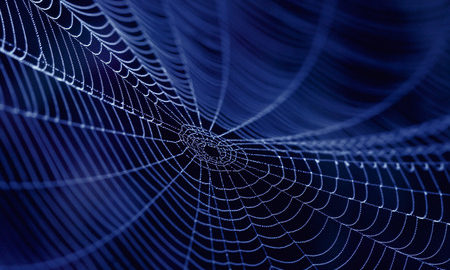How Antibiotic Silk Could Revolutionize the Face of Medicine

What happens when a spider expert and a chemist have an in-depth conversation? It’s not a riddle. As proven in research released in early January 2017, the result is the development of antibiotic synthetic spider silk with the potential to accelerate the regenerative medicine industry.
The Importance of Spider Silk
Spider silk might not sound like it fits into a discussion about regenerative medicine, but the qualities of spider silk are certainly appealing. Defined as a protein fiber spun by spiders, spider silk is utilized by spiders for everything from prey capture and immobilization to reproduction, nest lining, drop lines, and guidelines. Spider silk is used for such a variety of purposes because it offers incredible tensile strength, stiffness, extensibility, and low density. In addition, humans have understood the medical value of natural spider silk since ancient times, when the Greeks and Romans used it to dress wounds and stop bleeding.
Researchers recently produced recombinant, or artificial, spider silk from E.coli bacteria that actually mimics the toughness of natural spider silk, but until now it did not have any realistic medical applications. After five years of collaboration, researchers from The University of Nottingham uncovered a technique to create chemically functional spider silk that can be effectively used in regenerative medicine applications.
Utilizing Recombinant Spider Silk in Medicine
The team at The University of Nottingham developed a process called “click chemistry” that involves attaching specific molecules of antibiotics or fluorescent dyes to artificial spider silk. Once the molecule is “clicked” into place, it is said to be decorating the individual silk strands. As Neil Thomas, Professor of Medicinal and Biological Chemistry, explained, “Our technique allows the rapid generation of biocompatible, mono or multi functionalized silk structures for use in a wide range of applications. These will be particularly useful in the fields of tissue engineering and biomedicine.”
As an example, when a silk fiber was decorated with the antibiotic levofloxacin, it maintained its antibacterial activity for nearly one week and released slowly from the silk. This has huge implications in injury and disease treatment. By making biodegradable silk meshes “decorated” with customized molecules, the artificial spider silk can not only accelerate growth of new tissue but also provide a slow release of antibiotics.
In Dr. Thomas’ words, “There is the possibility of using the silk in advanced dressings for the treatment of slow healing wounds such as diabetic ulcers. Using our technique, infection could be prevented over weeks or months by the controlled release of antibiotics. At the same time, tissue regeneration is accelerated by silk fibers functioning as temporary scaffold before being biodegraded.”
The potential for artificial spider silk to contribute the realm of regenerative medicine is nearly endless, and only time will tell where these exciting innovations lead.


